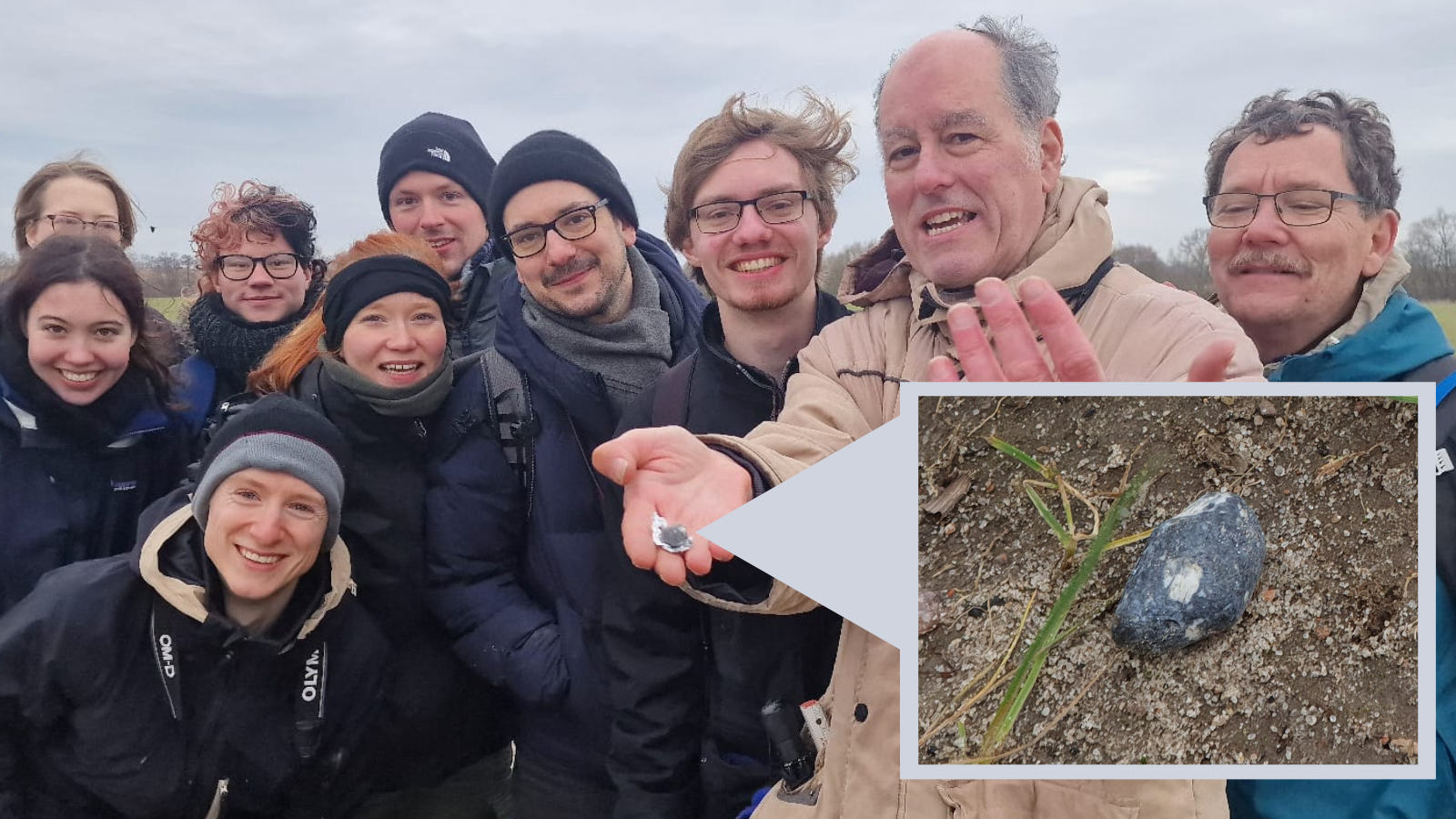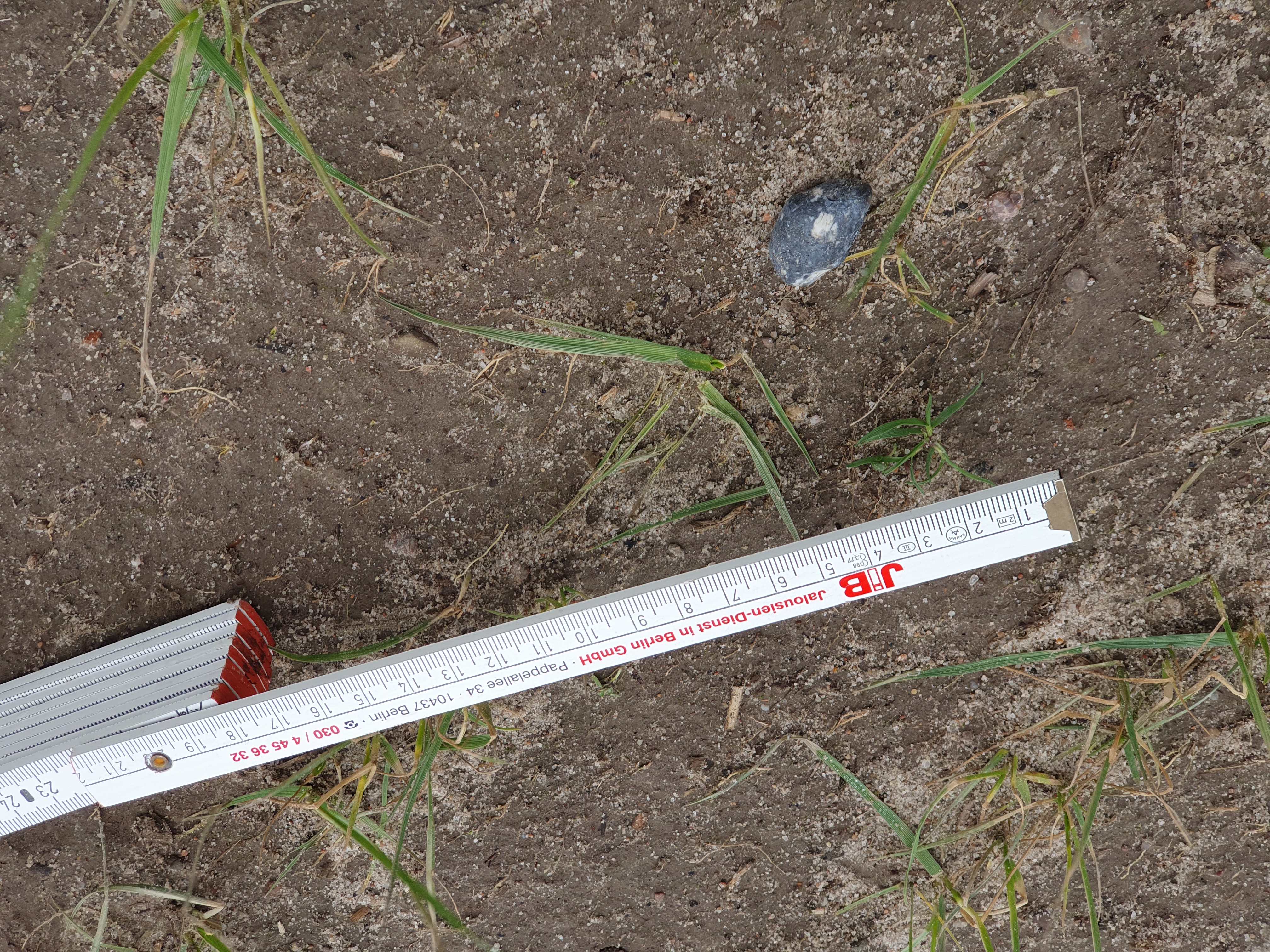Meteorites from Asteroid 2024 Bx1, which just hit Earth, may be super-rare space rocks
Meteorite hunters have successfully recovered fragments of an asteroid that impacted Earth over Berlin, Germany, on Sunday (Jan. 21).

Meteorite hunters have successfully recovered fragments of an asteroid that impacted Earth over Berlin, Germany, on Sunday (Jan. 21) — and the space rocks could be very rare indeed.
The 3.3-foot (1-meter) wide asteroid dubbed 2024 BX1 was spotted by NASA around 90 minutes before it hit Earth's atmosphere. It burned up upon impact, exploding and creating a fireball seen by observers across Europe.
Following the event, on Monday (Jan. 22), intrepid meteorite hunters were out searching for fragments of Asteroid 2024 BX1. One team that hit pay dirt was led by SETI meteor scientist Peter Jenniskens; the crew found the second and third fragments to be uncovered.
"I was incredibly relieved to find these meteorites," Jenniskens told Space.com. "We had walked many tens of kilometers on Monday, Tuesday, Wednesday and Thursday. I was getting a sinking feeling that maybe nothing survived from this — this very aggressive fragmentation."
The meteorites, weighing 5.3 grams and 3.1 grams respectively, were finally discovered by Freie Universitaet students Dominik Dieter and Cara Weihe at around noon local time on Friday (Jan. 26), with the team uncovering yet more samples on Saturday and Sunday.
Related: How NASA predicted the Jan. 21 asteroid crash over Germany
This isn't Jenniskens' first meteorite hunt.
The SETI scientist had led similar space rock searches for meteorites that came from asteroids detected in space before exploding in Earth's atmosphere. In 2008, for instance, he ran a meteorite-hunting expedition in Sudan as well as 10 years later in Botswana. More recently, Jenniskens found himself in France with a similar goal.
Breaking space news, the latest updates on rocket launches, skywatching events and more!
Jenniskens said this particular search, however, was so challenging because whereas meteorites are usually easy to distinguish from more mundane Earth rocks — they tend to possess a dark, smooth look — these fragments strongly resembled terrestrial rocks.
"What we're actually looking for was very different from what most people consider a meteorite," he said. "If you were walking through the fields and saw a rock like this, then you would pass by it."
The official classification of these meteorites hasn't been made yet, but Jenniskens hints that these samples could be something very special. "The next big step in the research is to understand what exactly we're looking at here," Jenniskens said.
"It's very cool."
What sets these meteorites apart?
Denis Vida, a meteor physics postdoctoral researcher at Western University, told Space.com that the parent body of the fragments found by Jenniskens and his team was part of a group of near-Earth asteroids called the "Apollo asteroids."
He added that, thanks to light reflected off its body, Asteroid 2024 BX 1 exhibited an apparent magnitude of 32.8, which makes it one of the faintest asteroids ever discovered. If it had a stony composition, Vida says that the asteroid likely weighed around 2 metric tons.
Some assumptions, such as the size and mass of the asteroid, might be incorrect, however, as the samples recovered appear to be a rare type of space rock, most likely aubrite, according to Vida. He added that this could mean Asteroid 2024 BX 1 was much smaller than estimated, making it one of the smallest asteroids ever discovered.
"Generally speaking, for all types of meteorites, about 10 fireballs drop at least 300 grams of meteorites over an area the size of California, France, or Spain," Vida continued. "Half of them happen during the daytime and go unobserved. The remaining half happens during overcast skies, leaving about two to three that are observable in theory, out of which only a tiny fraction actually get found.
"If meteorites of 2024 BX1 are confirmed to be aubrites, they make up only 1% of all known meteorites, making it very rare indeed."
Vida also explained what else scientists could learn about the now-destroyed Asteroid 2024 BX 1 from these fragments, considering how each meteorite type comes from a specific location in the solar system and has a unique history.
"Currently, there isn't an agreed-upon origin of aubrites, and several candidates have been put forward: The Nysa asteroid family, asteroid 3103 Eger, and even the planet Mercury," Vida said. "With this being a fresh fall, enabling quick lab analysis and such an accurate orbit, I am confident that this rock will get us one step closer to understanding the origin of aubrites and help piece together the story of the formation of the solar system."

Robert Lea is a science journalist in the U.K. whose articles have been published in Physics World, New Scientist, Astronomy Magazine, All About Space, Newsweek and ZME Science. He also writes about science communication for Elsevier and the European Journal of Physics. Rob holds a bachelor of science degree in physics and astronomy from the U.K.’s Open University. Follow him on Twitter @sciencef1rst.

